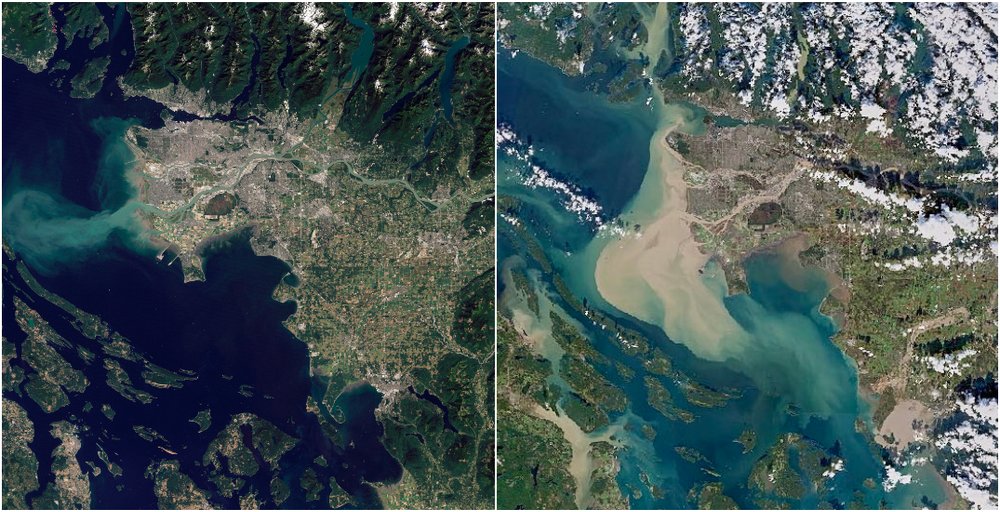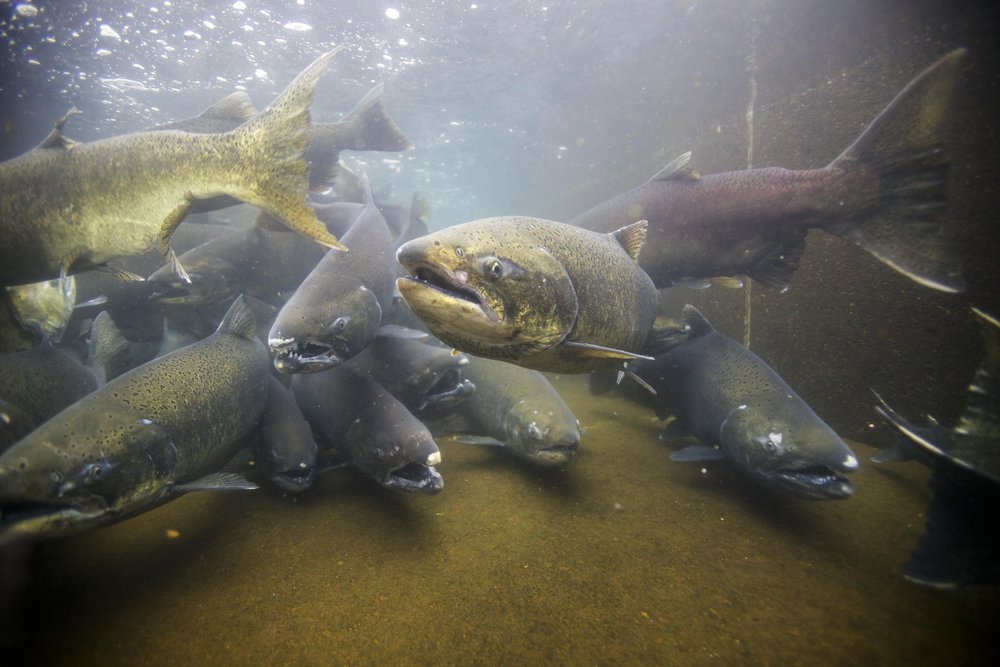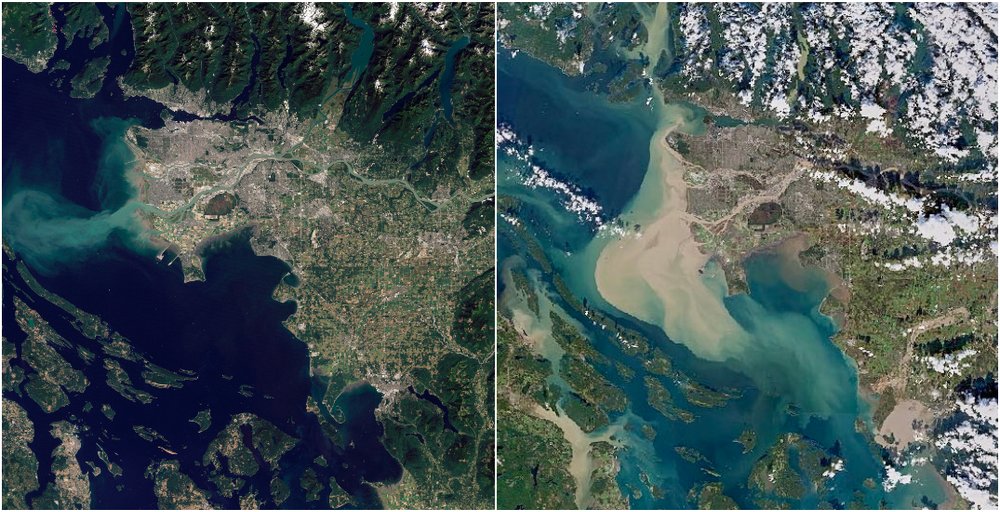By Bob Carey, Strategic Partnerships Director with TNC Washington
What do the Mississippi River Basin, Colorado River Basin, and Fraser River Basin all have in common? They are all huge river systems. They have all supported human communities and cultures for many centuries. They are all places grappling with an increase in catastrophic flooding. And they are all looking to Washington’s Floodplains by Design (FbD) initiative as a model for climate adaptation.
Floodplains by Design centers on one foundational truth that TNC and our partners have learned over many years: that an integrated, collaborative approach to flood risk reduction and restoring rivers helps communities to do more, faster. More work to find collaborative solutions upfront, results in more action, and more durable solutions on the back end.
For comparison, the left is a photo of the Fraser River from 2011, the right was taken on November 17, 2021, showing the floods from space. Credit: The Earth Observatory/NASA, @Cmdr_Hadfield/Twitter
In recent years, TNC Washington has focused on increasing our impact through an intention to scale, transfer, and advance projects. In practice, this requires building partnerships and leveraging new resources to enable more projects to unfold, building capacity in and transferring operations to partners, and advancing the work beyond our local impact through policy change and exporting the work to other landscapes. FbD was built on this model and now there is increasing interest to adopt our approach beyond Washington. Conversations have unfolded with several partners and colleagues in the Mississippi River basin interested in the integrated, multi-benefit approach, and a partner organization in Colorado is currently staffing-up to replicate what has been accomplished here in Washington. But closer to home, a group of partners under tribal leadership and direction, are bringing FbD-inspired solutions to life in the Emerald Edge and Salish Sea.
Those of us that live in the U.S. have long heard about the Mississippi (the Big Muddy, the American Nile) and the Colorado (think Grand Canyon and Lake Powell). Many of us know less about the huge river just north of the border, but the Fraser River is by far the largest river in the Salish Sea – draining an area 15% larger than Washington State. It runs through the Emerald Edge, the coastal rainforest that runs from Alaska, British Columbia, and Washington, and is the world’s largest producer of sockeye salmon and the largest producer Southern Resident Killer Whales’ preferred prey – Chinook salmon. The river has provided cultural, economic, and spiritual sustenance to dozens of First Nations since time immemorial. Today, the lower Fraser basin alone is home to 31 First Nations and serves as the largest population and economic center on Canada’s west coast.
Adult chinook salmon.
Unfortunately, the combination of human development and climate change has wreaked havoc on the Fraser’s natural abundance. Salmon returns have taken a precipitous downward turn. And last fall the region was wracked by flooding – with damages far exceeding the catastrophic impacts felt south of the border in Washington state. Fortunately, there is a growing coalition working to reverse these trends. Under the leadership of Tyrone McNeil, tribal chief and chair of the Coast Salish Emergency Planning Secretariat, and drawing from the Floodplains by Design experience, this group has captured the attention of provincial and national leadership, working to influence $5 billion in funding that the Canadian government has committed to recovery.
This Indigenous-led effort mirrors and builds upon that of Floodplains by Design, relying on principles that should be part of any effective and equitable climate adaptation efforts. Using these attributes as guideposts is not only a more just way to adapt to a changing climate, but a more effective approach – enabling more impactful and resilient solutions, and accelerating positive change. They include:
-
A paradigm shift toward deeply collaborative, holistic management of our lands and waters
-
Inclusive processes that engage all impacted interests and center tribal leadership
-
Integrating climate science, public health and safety, ecosystem recovery, agricultural viability, and economic sustainability
-
The innovation and promotion of community-driven, multi-benefit and nature-based solutions
The foundational principles belying FbD’s success were discussed in sessions of the cross-border Salish Sea Ecosystem Conference last month. Floodplains by Design leaders have been invited to travel north in June to share our experience with local, provincial, national and First Nations leadership.
I think back to the risky chance we took when TNC and our partners launched the Floodplains by Design initiative with financial support from EPA, NOAA and Boeing, and asking “could we break the political and social logjams and accelerate habitat restoration and salmon recovery by putting public safety and other community interests on equal footing with environmental goals?”. At the time if felt revolutionary. And now clear the answer is not only a resounding YES for Washington, but that others may also be embracing a braided benefit strategy to make community, climate and biodiversity progress, faster. Now that’s scaling our impact!
